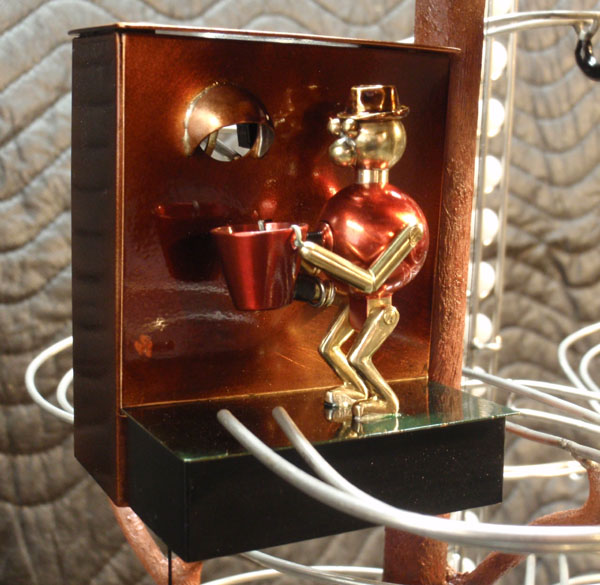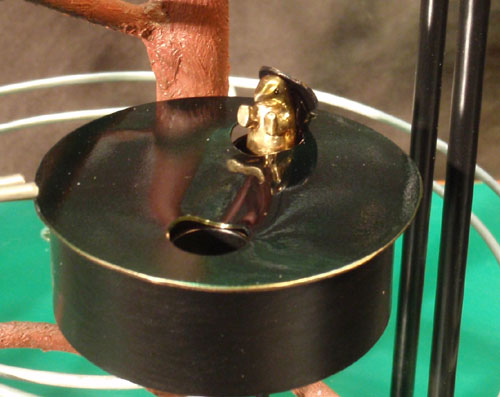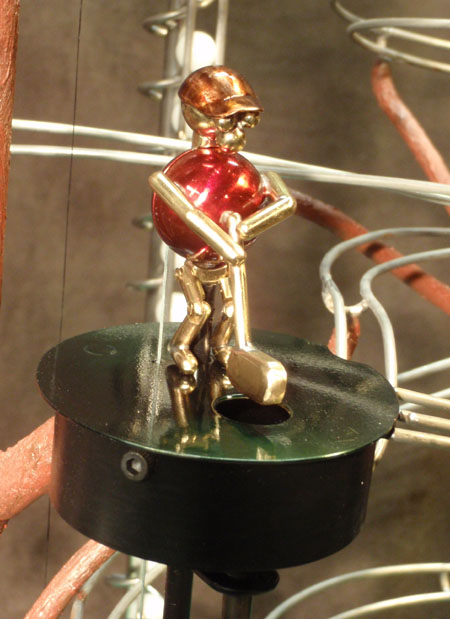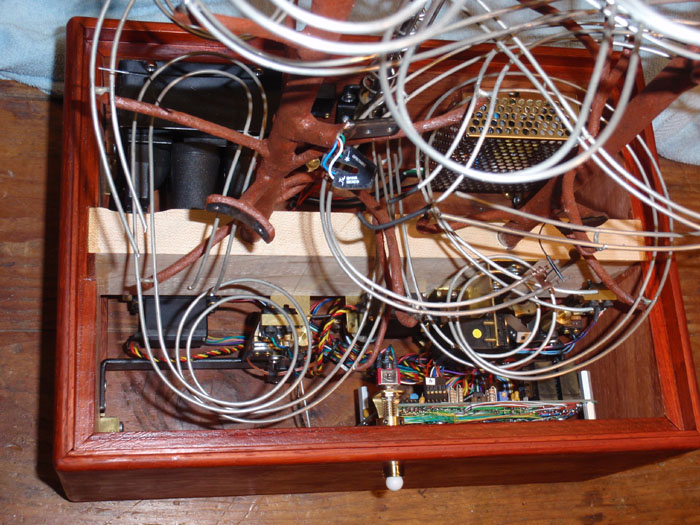Par One
"Par One" is a Rolling Ball Sculpture with golf. A man operating a ball machine gets a ball in his bucket, and pours it onto the golf course. A golfer with a driver hits it onto the course, where it travels down to a spiral funnel hole. A putter hits the ball toward the hole, it misses the hole, and a gopher pops up and knocks the ball into the hole. This sculpture is 24" (61 cm) tall, and has two separate tracks for the balls to travel to the bottom.
What does "Par One" mean? At each hole in a golf course there is a sign that says what the "par" is on the hole: how many strokes it should take for a good golfer to get it in the hole. The easiest hole is "par 3"; a harder one is "par 5". There is no "par 1" because then the golfer would be expected to get the ball in the hole in one shot! Here, there is a "par 1". However, the golfers get help from a gopher, and still get it in the hole after hitting a duck or a squirrel.
The ball comes in behind the ball machine. First the ball comes out of the chute into the bucket, then the man leans over and dumps the ball onto a track.
Infra-red lights and sensors in the ball machine and the driver and putter tell the two computer chips when a ball is ready for action.
When a ball arrives under the putter, a linear actuator raises the ball into position under the putter. A servomotor makes the putter pivot his body and swing his club.
The putter's ball hits a squirrel, misses the hole, and a gopher pops up and knocks the ball into the hole. He is activated by a servomotor.
Inside of the base there are seven motors and two microcontrollers (computer chips) to run everything.
One motor turns the spiral lift to get the balls to the top.
Four servomotors control the swings of the driver and the putter, the emergence of the gopher, and the operation of the ball machine.
Two linear actuators (by Firgelli) push the balls up from under the golfers into position to be hit.





